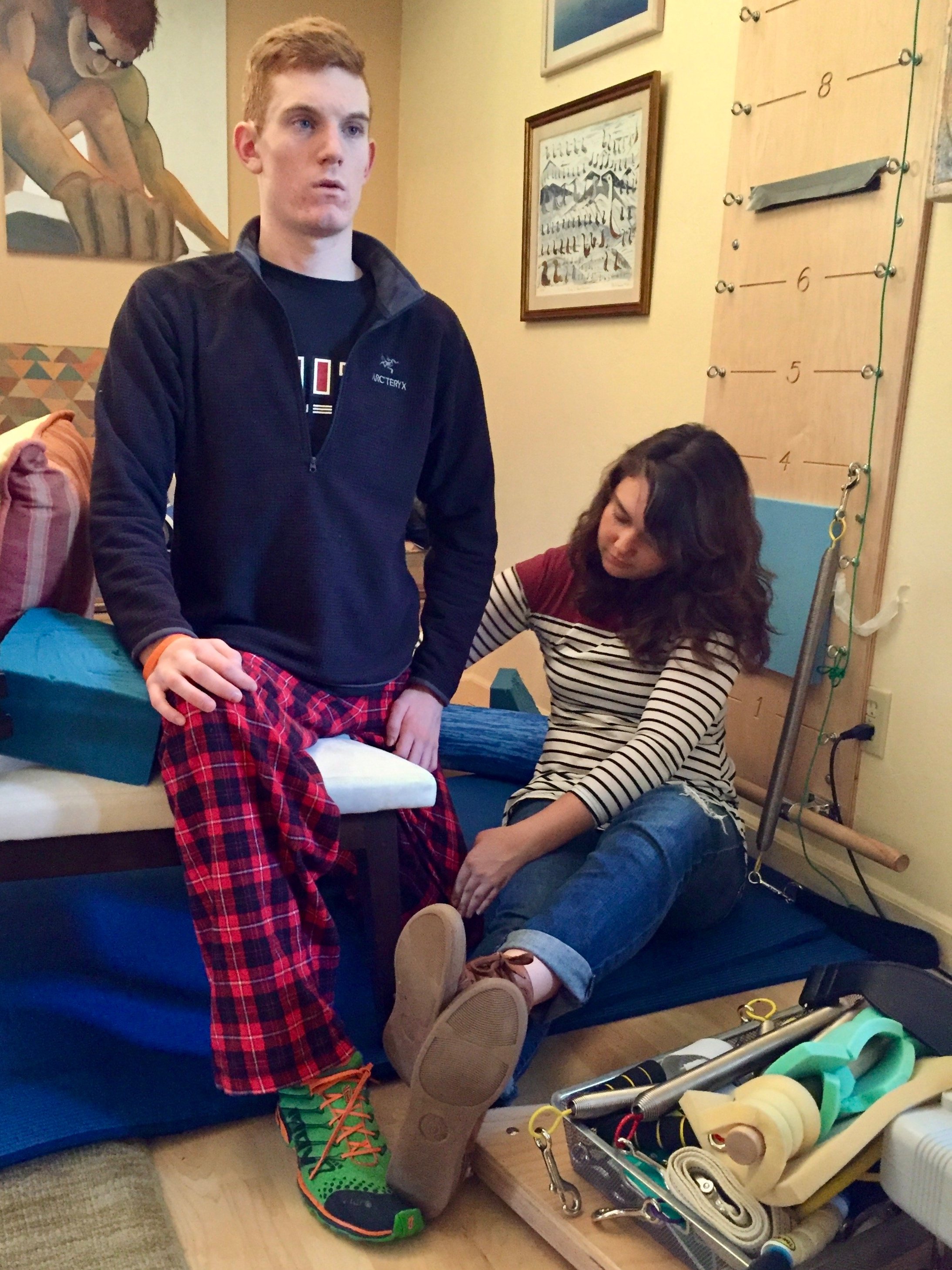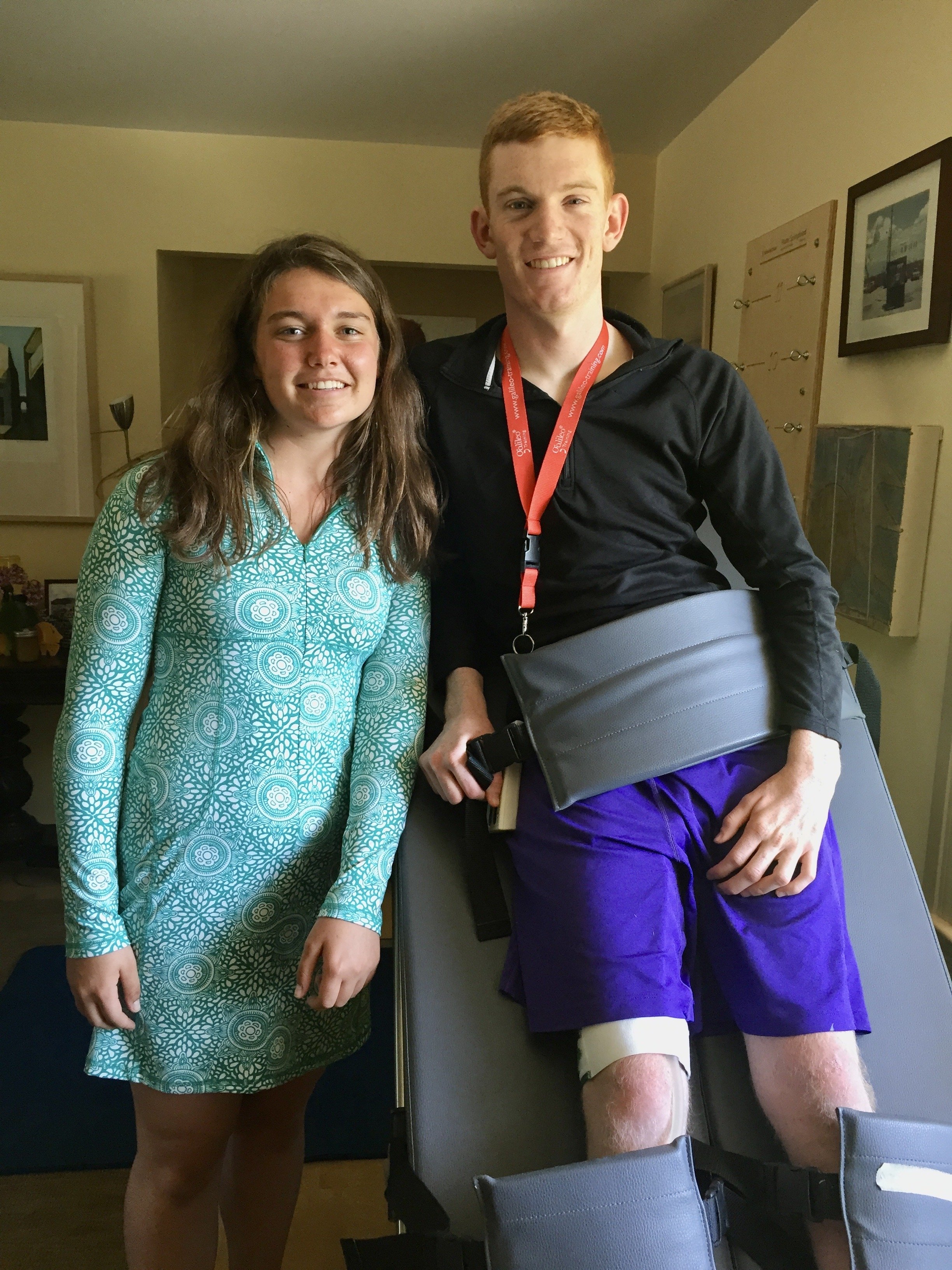How to cut your SCI training costs by 60%
Hint: You don't need specialized trainers or equipment.
Here’s something everyone agrees on:
SCI rehab training is expensive!
Outside of the limited physical therapy offered after SCI, out-of-pocket “paralysis specialist” personal training runs between $75-$150 per hour. At 2-10 hours per week, individuals with spinal cord injury will spend $7,800 to $78,000 per year just on therapy! This is clearly not sustainable for most.
When talking to other individuals with SCI, I often hear that they feel they need to work with neuro-specialized personal trainers to have any hope of recovering movement after injury. The expectation that you either spend so much money or you won’t improve function creates considerable stress for newly injured individuals and their families. Is this actually true, however? Clearly we should give these assumptions a second look…
While there is no replacement for skilled movement analysis or specialized equipment to support the body exactly as it needs…the reality is that most individuals with SCI simply need a little bit of guidance, then a lot of repetition of simple movements to reconnect the body after SCI.
Do we really need to pay $150/hour for someone to stretch our hamstrings?
While it may seem crazy to think that every 2-minute hamstring stretch costs $5, this is the reality for many individuals with SCI who want to use what they consider to be “the best” training. That's what I myself did, and thought I needed, for almost 2 years!
Paralysis rehabilitation is intimidating since so much physical support is needed. But with a little bit of guidance, any untrained individual is able to assist. So, if what we really need 90% of the time doesn’t require specialized assistance, doesn’t it make sense to look into more affordable helpers? How much more sustainable would recovery be? How much more feasible would lasting neuromuscular connection become if the financial pressure were reduced?
I believe that we, as an SCI recovery community, have a lot of work to do to disentangle these tasks. We must distinguish between when the movement experts are required – for program guidance, postural analysis, or precise cueing, for example – versus when we simply need a little bit of support sitting up straight, then relaxing, then sitting up…a thousand times.
This was personal for me…
As my resources were dwindling in my third year post-SCI, I had to come up with a way to stretch my rehab budget (and my hamstrings!) but still give my body what it needed to keep improving. I reduced my gym days from 4x/week to 2x/week and hired a high schooler to fill in the other two days.
It was a risky leap (are high schoolers reliable??) but I hit the jackpot with Brianna, who was an athlete, a quick learner, and open-minded enough to jump into helping a random guy with paralysis rehab. I got my reps in with Brianna’s support, and the time spent with my specialists was really focused on the nuances of connection. Brianna benefitted by learning a lot, as you’ll see in her interview below, and she more-than-satisfied her high school’s volunteering requirement.
Reducing costs in SCI rehab
“Hiring a highschooler” and taking ownership to make my rehab affordable went like this:
I asked my specialists what I should be working on at home, noting that I’d have access to a helper and small pieces of equipment for my workouts.
We came up with 3-5 floor-based exercises to start with, and they didn’t require any big movements. (Remember: small things come first!)
Find my helper! Options in your area might include PT students, high school athletes who want flexible summer jobs, or local volunteers who can add hands-on experience to their college applications.
I set a regular schedule with Brianna, with sessions lasting 1.5-2.5 hours. You’ll also save time when you have your helper come to you, rather than visiting a trainer at the studio.
Notice how your skills change over time and ask your trainer for evolved movement targets as you improve.
This method will take some patience and work, and there will inevitably be frustrations as you stumble through articulating instructions for your helper. But this entire experience cultivates ownership of your movement progress, rather than relying on an expert trainer 100% of the time.
So, how can you bring your helpers up-to-speed on what it means to work with someone with spinal cord injury?
Our online course, The Groundwork, is designed for people (trainers, students, helpers) who want to start working with SCI clients.
Let’s revisit the math: instead of $31,200 per year (6 hours per week at $100/hour), you can maintain 1 hour with your trainer, and spend 7 hours with your helper (adding 2 hours to the total with the commuting time saved) at $20/hour, for $12,480 per year. That’s a 60% savings, with an additional 2 hours of training, and less time spent in the car!
I recently interviewed Brianna to give a sense of how this went for someone entirely new to SCI. For those interested in the details – check out the interview below! Thanks again, Brianna!
The Brianna Interview
Theo: Brianna, we worked together over the course of your high school senior year, way back in 2016. I recruited you to help me with at home exercises that my physical therapist taught me, and which I just had to log repetitions doing. Can you start by sharing what sparked your interest in helping someone with at-home paralysis rehab?
Brianna: At my high school, we were required to do a community service project accompanied by a presentation and related research paper. At a loss of what project I should do, I was approached by the woman who runs the College and Career Center at Sonoma Valley High School, also a mutual friend of Theo's. She mentioned to me that Theo was in search of a physical therapy assistant that upcoming summer. I liked the idea of being able to help someone in my community who I could relate to (young, athletic, college-age), but who also was facing an experience I was unfamiliar with. I can say that I enjoyed it far more than I even expected – I remember exceeding the required volunteer hours months before they were due without even realizing it.
If you can recall, what did you expect initially, and what surprised you about the work we did?
I expected the goals of the physical therapy to be a bit more "big picture" than what we worked toward in our sessions. When I used to think of physical therapy for paralysis, I expected that everyone with an SCI's main goal was to walk again, and nothing else. I learned these goals can be so much more nuanced - things like being able to cook for yourself, have better core control, and to write with a pen might be more top of mind for someone with an SCI, depending on their level of injury and lifestyle.
I also didn't know what to expect when it came to the physical exercises themselves, but I adapted to assisting with them swiftly. I found the sessions somewhat meditative - Pilates is about moving slowly and with intention. Pilates based physical therapy also requires being a bit creative - it was not always straightforward how to approach setting up for an exercise or executing it effectively. Learning to be playful and patient was key.
Did you have any fears about physically facilitating the movement of someone with paralysis? If so, how did you resolve them?
Perhaps I approached this project too naively, but I actually didn't have any fears coming into this. I was an athlete at this time and very sure of myself physically, so I didn't have any doubt that my body could handle whatever was coming for me. I definitely had to consistently work to improve my form over the 9 months Theo and I worked together, in an effort to both execute the movements better and protect my body.
I remember you were doing a lot of rowing at the time…did the experience of observing the movement of someone with neurological impairments have any interaction with your athletic life?
I left every session a little more mindful of my body and how it moves through space. I became more aware of the muscles I was engaging with each stroke – how my core tightened when I brought the oar to my chest, or how my triceps fired up as I pushed the handle toward the rigger. But being cognizant of how my body moved didn't stop with rowing – working with a person with an SCI opened my eyes to the little connections and firings that happen in all the mundane movements I didn't bring my attention to before – like when I buttoned a blouse, or shuffled a deck of cards. The experience brought me both awareness and gratitude in all my body can do.
Do you carry any learnings from the experience with you today?
There was definitely a bit of a learning curve – on my first day of working with Theo, I couldn't tell you the difference between an adductor and an abductor, and had never heard the term "fascia." Theo did a fantastic job of providing me with a solid foundation on the basic terminology I needed to know, while also instructing me on the physical movements.
Would you recommend this kind of work (for example, a summer job?) to high schoolers interested in the health/medical field generally?
Most certainly! It's a great way to get patient-first insight on the SCI recovery experience and how the SCI body responds to Pilates-based physical therapy. It was a galvanizing experience for me – I loved how every little victory we made felt worth celebrating. As someone whose job is now mostly computer facing, I look back fondly to how very grounding and hands-on this position was. I also left this job with a demystified perspective on the disability experience as a whole and a sense of connection to the community.
The interview was edited lightly for clarity.
About the Author of this Blog:
Theo St. Francis endured a spinal cord injury in 2013, and spent several years engaged in rehab full-time. As an engineer, he applies a first-principles approach to recovering movement, emphasizing SCI-athlete ownership at each stage of the process.




